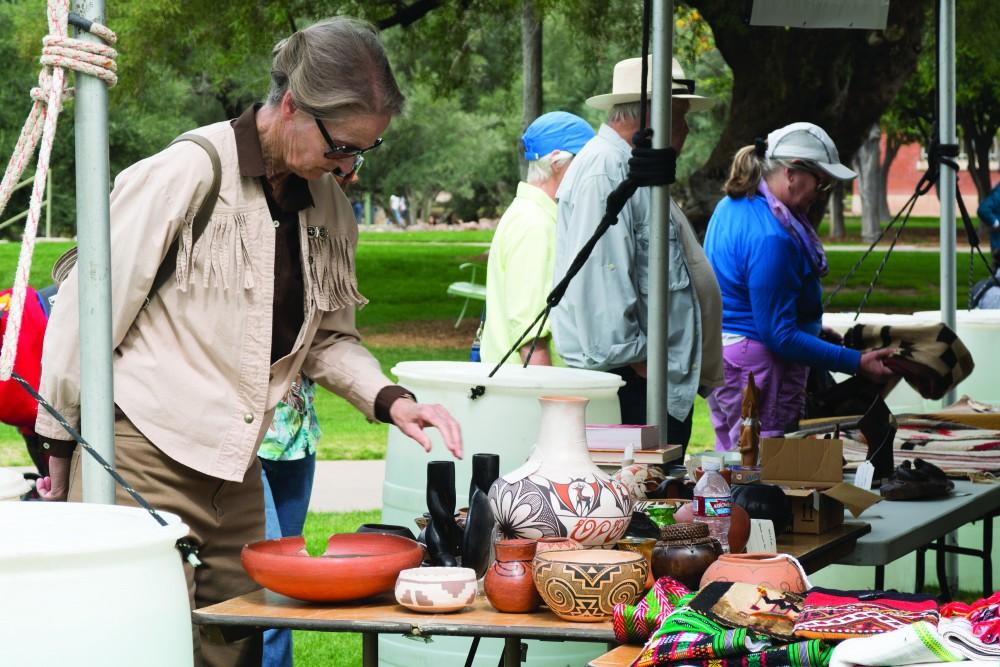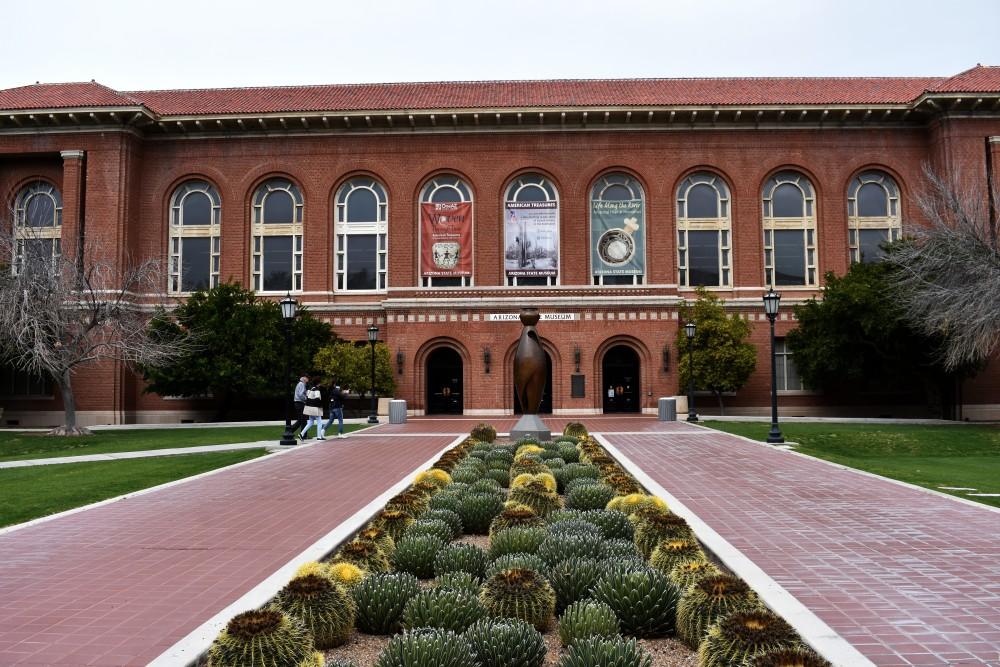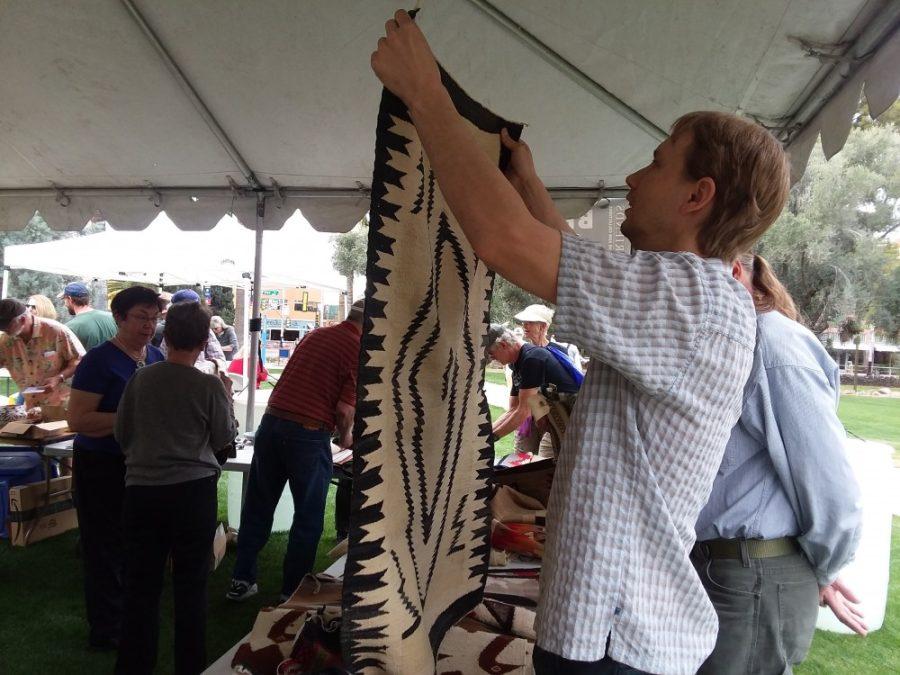The Arizona State Museum will hold two benefit sales during its open house on Saturday, March 2, from 11 a.m. to 3 p.m. at the University of Arizona.
ASM’s free open house will be in celebration of Arizona Archaeology and Heritage Awareness Month.
“This event gives the public the opportunity to go behind the scenes to meet curators, visit laboratories and tour collections areas,” said Darlene Lizarraga, ASM’s marketing director. “There will also be lots of hands-on activities, docent- and curator-guided tours.”
The open house will coincide with the Tucson Festival of Books, taking place on campus that same weekend.
“Holding an open house during Tucson Festival of Books affords us the opportunity to engage hundreds of new people who otherwise might not have previously known about the Arizona State Museum,” Lizarraga said.
One of the benefit sales being held will feature donated Native American art, including Southwest pottery, jewelry, paintings, textiles, baskets and sculptures. Visitors will be able to buy these items on the front lawn outside the ASM.
RELATED: Brooks Fail: swimming with the greats
“Proceeds benefit ASM’s ethnological collections section, providing a budget for the strategic purchase of modern pieces that augment and enhance the museum’s permanent collections,” Lizarraga said.
According to Diane Dittemore, ASM’s associate curator of ethnology, the museum’s current ethnological collections are made up of around 40,000 specimens. They include textiles, pottery, beadwork, weapons, musical instruments and carvings.

“Most of our ethnological collections hail from the southwest U.S. and northwest Mexico,” Dittemore said. “But we have collections from all over the world and examples of basketry from all over North America.”
The ASM was founded in 1893 and, being the only museum on the UA campus at that time, received collections from professors doing fieldwork in places including Africa and the Pacific.
“Due to our association with the anthropology department, we also have collections from faculty projects in Philippines, southern Mexico and South America,” Dittemore said.
Fundraising and donations from other organizations continue to make it possible for the 126-year-old museum to expand its collections.
“In the past decade, we have been able to acquire new, contemporary Southwest Native American works through purchase, with funds generated through the Friends of the ASM Collections membership and events such as our upcoming benefit sale,” Dittemore said.
The annual Native American art sale is put on by the Friends of the ASM Collections, a group of ASM members founded in 2005. In addition to the benefit sale, the group supports the ASM and its collections through educational activities, purchases and public programs.
RELATED: Q&A: Fungi: more than a decomposer
“The Friends’ fundraising activities have been so successful over the years that in 2018, they were able to establish an endowment fund which will support the museum’s ethnological collections section in perpetuity,” Lizarraga said.
The second benefit is an annual used book sale, set up by the Arizona Archaeological and Historical Society, that will support the ASM library.
AAHS was established in 1916 by Byron Cummings, ASM’s first director, and according to Lizarraga, the society has been the museum’s longest-running source of support and partnership.
“Ninety percent of our proceeds go to support the ASM library, which receives little or no funding from the state or the university,” said Katherine Cerino, AAHS’s library chair. “Last year, we raised over $4,000 for the library.”
The society has held annual book sales to support the ASM since 1992 and the event has grown in recent years.
“We have a wide variety of books, including archaeology, anthropology, history, biography and art, with a spatter of novels and children’s books,” Cerino said. “Our prices are extremely reasonable, so it is easy to pick up a book that appeals or furthers a collection without a large outlay of cash.”

Unknown profile photo The Arizona State Museum at the University of Arizona located at 1013 E. University Blvd in Tucson AZ on Monday 18, February. The Museum was established in 1893 and is one the University’s original research units.
According to Cerino, the book sale offers a chance to find works that take a closer look at Southwestern and Native American culture.
“A lot of our books are donated by retiring anthropology professors, so they include often hard to find ‘grey literature.’ That is, reports not published by major presses but rather the archaeology firms that did the research,” Cerino said.
Each year, the leftover books that are not sold at the event are kept by the ASM library and added to its collections.
Follow Jesse Tellez on Twitter









